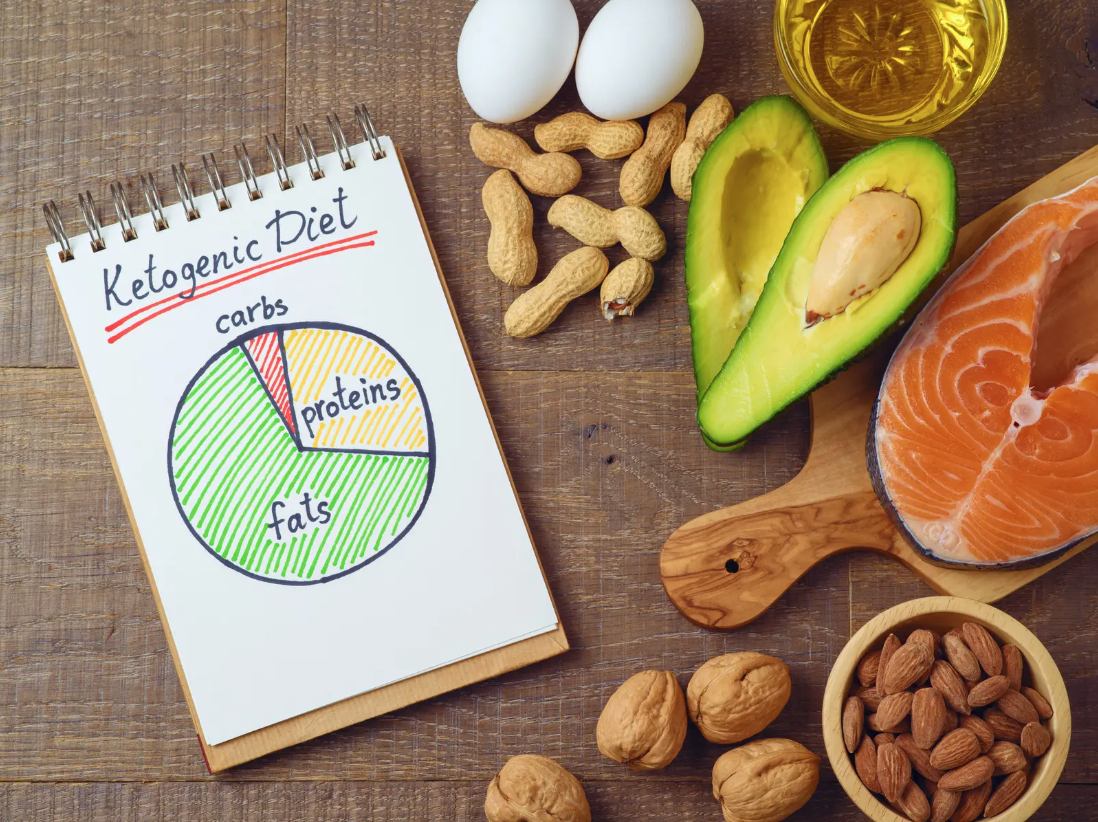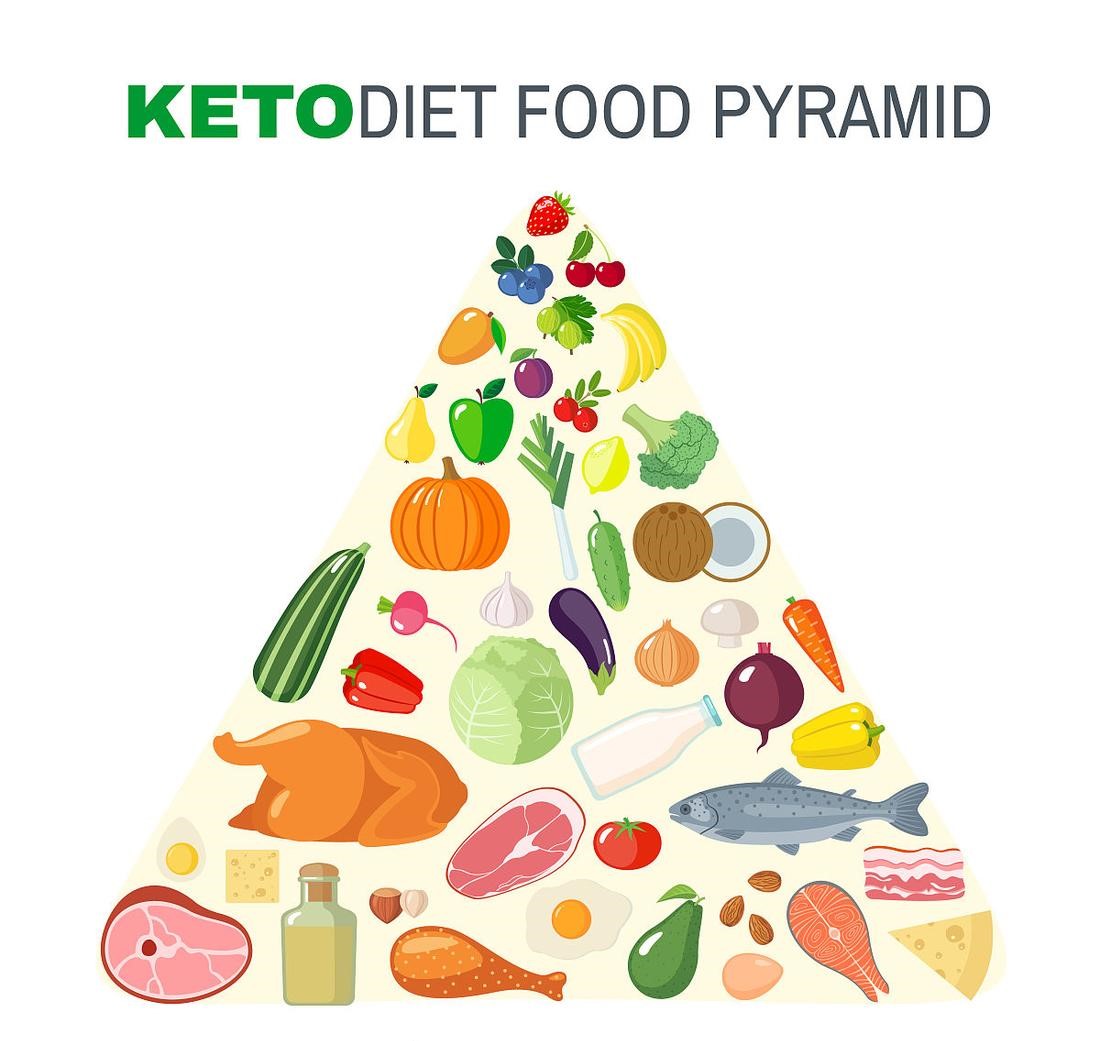Ketosis and Ketogenic Diet
WHAT IS KETOSIS?
In a normal state, your body uses glucose obtained from carbohydrates to make energy. When carbohydrates are broken down, the resulting simple sugar can be used as a convenient fuel source. Extra glucose is stored in your liver and muscles as glycogen and is broken down through a process called glycogenolysis if extra energy is needed in the absence of dietary carbohydrate intake.
Restricting the amount of carbohydrates you eat causes your body to burn through stored glycogen and begin using fat for fuel instead. In the process, byproducts called ketone bodies are produced. You enter a state of ketosis when these ketones build up to a certain level in your blood. The body will only enter ketosis if blood sugar drops low enough to require alternative fuel from fat.
Ketosis shouldn’t be confused with ketoacidosis, a complication associated with diabetes. In this serious situation, a lack of insulin causes an excess of ketones to flood the bloodstream. If left untreated, this condition can be fatal. Diet-induced ketosis is meant to keep ketone levels low enough to avoid a state of ketoacidosis.

A KETOGENIC DIET HISTORY
To trace the roots of the keto diet trend, you have to go all the way back to 500 B.C. and the observations of Hippocrates. The early physician noted fasting appeared to help control the symptoms we now associate with epilepsy. However, it took until 1911 for modern medicine to conduct an official study on how caloric restriction affected epileptic patients. When the treatment was discovered to be effective, doctors began using fasts to help control seizures.
Since it’s not possible to stay on a fast forever, another method for treating the condition needed to be found. In 1921, Stanley Cobb and W. G. Lennox discovered the underlying metabolic state caused by fasting. Around the same time, an endocrinologist named Rollin Woodyatt conducted a review of research relating to diabetes and diet and was able to pinpoint compounds released by the liver during a state of fasting. These same compounds were produced when people consumed high levels of dietary fat while restricting carbohydrates. This research led Dr. Russel Wilder to create the ketogenic protocol for treatment of epilepsy.
In 1925, Dr. Mynie Peterman, a colleague of Wilder’s, developed a daily formula for the ketogenic diet consisting of 10 to 15 grams of carbohydrates, 1 gram of protein per kilogram of bodyweight and all remaining calories from fat. This allowed the body to enter a state similar to starvation in which fat was burned for energy while providing enough calories for patients to survive. Other therapeutic uses of ketogenic diets are still being investigated, including potential positive effects for Alzheimer’s, autism, diabetes and cancer.
HOW DOES THE BODY ENTER KETOSIS?
Bumping up your fat intake to such high levels leaves very little “wiggle room” for consuming other macronutrients, and carbohydrates are restricted the most. The modern ketogenic diet keeps carbohydrates to under 30 grams a day. Any amount higher than this prevents the body from going into ketosis.
When dietary carbohydrates are this low, the body starts to metabolize fat instead. You can tell if ketone levels in your body are high enough to signal a state of ketosis by testing one of three ways:
- Blood meter
- Urine strips
- Breathalyzer
Proponents of the keto diet claim blood testing is the most accurate of the three due to the types of ketone compounds it detects.
BENEFITS OF KETOGENIC DIET
1. Promote weight loss: The ketogenic diet can reduce the content of carbohydrates in the body, decompose the sugar stored in the liver and muscles to provide heat, and after the sugar stored in the body is consumed, it will use fat for catabolism, As a result, the body forms a large number of ketone bodies, and ketone bodies replace glucose to provide the body with the required heat. Because of the lack of glucose in the body, the secretion of insulin is insufficient, which further prevents the synthesis and metabolism of fat, and because the decomposition of fat is too fast, the fat tissue cannot be synthesized, thereby reducing the fat content and promoting weight loss.
2. Prevent epileptic seizures: through Ketogenic diet can prevent epilepsy patients from seizures, reduce the frequency of epilepsy patients, and relieve symptoms;
3. It is not easy to be hungry: ketogenic diet can suppress people’s appetite, mainly because the vegetables in the ketogenic diet contain dietary fiber, which will increase the human body. Satiety, protein-rich meat, milk, beans, etc., also have a role in delaying satiety.
ATTENTION: NEVER ATTEMPT THE KETO DIET IF YOU’RE:
Breastfeeding
Pregnant
Diabetic
Suffering from gallbladder disease
Prone to kidney stones
Taking medications with the potential to induce hypoglycemia
Unable to digest fat well due to a metabolic condition
Blood Glucose, Blood β-Ketone, and Blood Uric Acid Multi-Monitoring System:
Post time: Sep-23-2022



